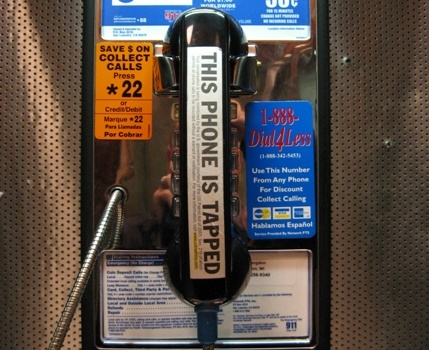ACLU Finds Explosion DOJ Electronic Surveillance
09/28/2012 -
The Justice Department’s use of electronic surveillance tools to monitor Americans communications, particularly online, has exploded over the past few years, according to ashort reportreleased by the American Civil Liberties Union on Thursday.
Between 2009 and 2011, the number of original orders for phone surveillance submitted to courts by the Justice Department (DOJ) increased from 23,535 to 37,616, a 60 percent increase.
The surveillance tools in question are known as “pen registers” and “trap and trace” devices. The former collects non-content related information of outgoing communications, such as time and recipient’s number or e-mail address, while the latter collects non-content-related information about incoming communications. The ACLU procured the information after suing the government for failing to respond to a Freedom of Information Act request in pursuit of the documents.
This increase in phone surveillance, states the ACLU, caused an exponential increase in the amount of people under surveillance. “In fact, more people were subjected to pen register and trap and trace surveillance in the past two years than in the entire previous decade,” the report notes.
Pen registers and trap and traces have also been used to target e-mail and network communication data. Over the past two years, the ACLU found that Justice Department e-mail and Internet surveillance authorizations increased nearly fourfold from 360 in 2009 to 1,661 last year.
The rise in online surveillance requests reflects the shift in how people communicate, DOJ National Security Division spokesman Dean Boyd told the Associated Press.
‘‘In every instance cited here, a federal judge authorized the law enforcement activity,’’ he said. ‘‘As criminals increasingly use new and more sophisticated technologies, the use of orders issued by a judge and explicitly authorized by Congress to obtain non-content information is essential for federal law enforcement officials to carry out their duty to protect the public and investigate violations of federal laws.’’
The ACLU, however, says the judicial oversight of these surveillance tools is “procedural” rather than substantive. Unlike a wiretap, which requires law enforcement agencies demonstrate probable cause because it allows law enforcement to listen in or view the content of communications, pen registers and trap and traces only require that law enforcement agencies certify that the information is relevant to an ongoing criminal investigation.
The logic of this far laxer legal standard revolves around distinctions between monitoring the content of communications and monitoring their transmission, notes the ACLU. Since pen registers and trap and traces only record information about the communications, rather than the message communicated, the surveillance doesn’t rise to the level of intrusion that requires a probable cause warrant, according to the courts. Its a conclusion the ACLU disagrees with.
“The content/non-content distinction from which these starkly different legal requirements arise is based on an erroneous factual premise, specifically that individuals lack a privacy interest in non-content information,” argues the report. “Non-content information can still be extremely invasive, revealing who you communicate with in real time and painting a vivid picture of the private details of your life.”
When combined, total DOJ intercepts rose 64 percent between 2009 and 2011, according to the AP. This increasing frequency of government surveillance is a trend the ACLU has observed across all levels of government, pointing to a recentNew York Times story on the 1.3 million government requests for customer information from cell phone carriers and its owninvestigationrevealing cell phone tracking by law enforcement departments small and large.
